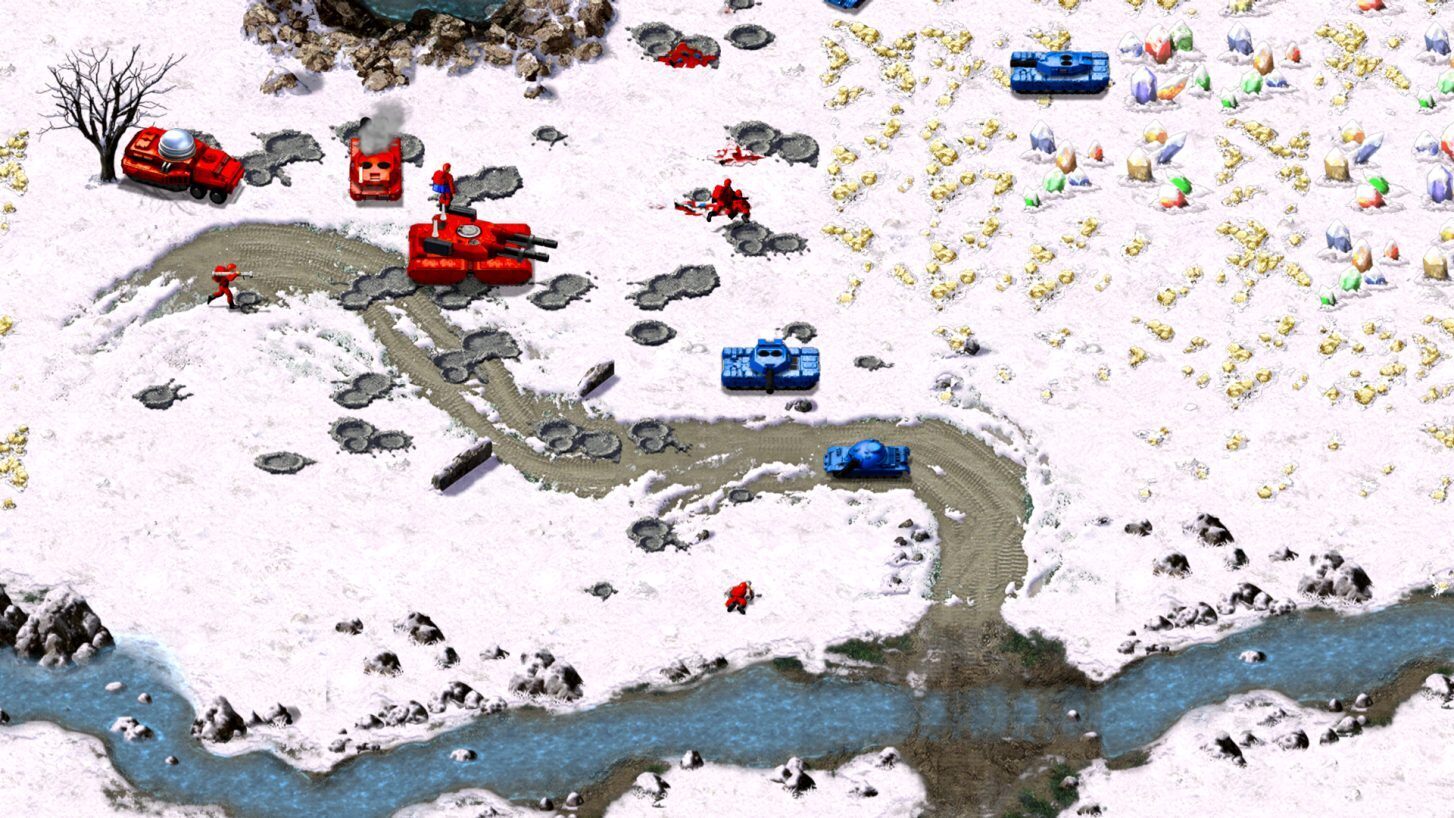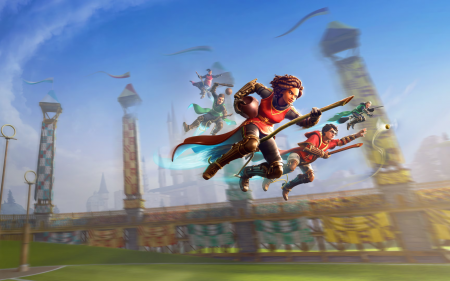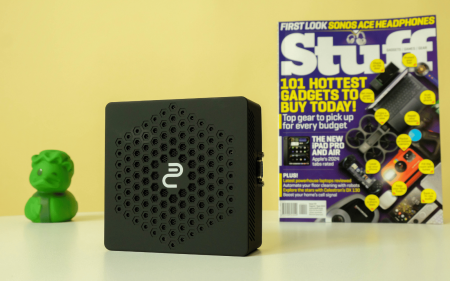Command and Conquer explored the idea of time travel before this, now it's had a little time-travel of its own. This remaster is an excellent one -- all the more so after you see just how few of the original files Petroglyph had to work with.
-
Visual upgrades
-
Gameplay tweaks
-
Nostalgia power
-
Bang for buck
-
Enhanced audio
This is a place I didn’t ever think I’d get to be — playing Command and Conquer: Red Alert in 2020 and loving it. The game has a special place for me because it was the first game I ever played on a PC that was all my own. Literally the first thing I did on booting up the PC, which ran Windows 98 and contained a mighty AMD K6 processor, S3 Virge ‘graphics card’, 32MB of RAM and a 4GB HDD, was install and run Command and Conquer Red Alert.
It was absolutely glorious playing at a detailed 640×480 resolution (when the GPU could be bothered to work), sending GDI troops off to their doom at NOD bases. Thought I spent most of my time playing against the Soviets, I took a very Soviet approach to the game. That is, throw troops at the problem till I won. Not much has changed.
A NOD to better graphics
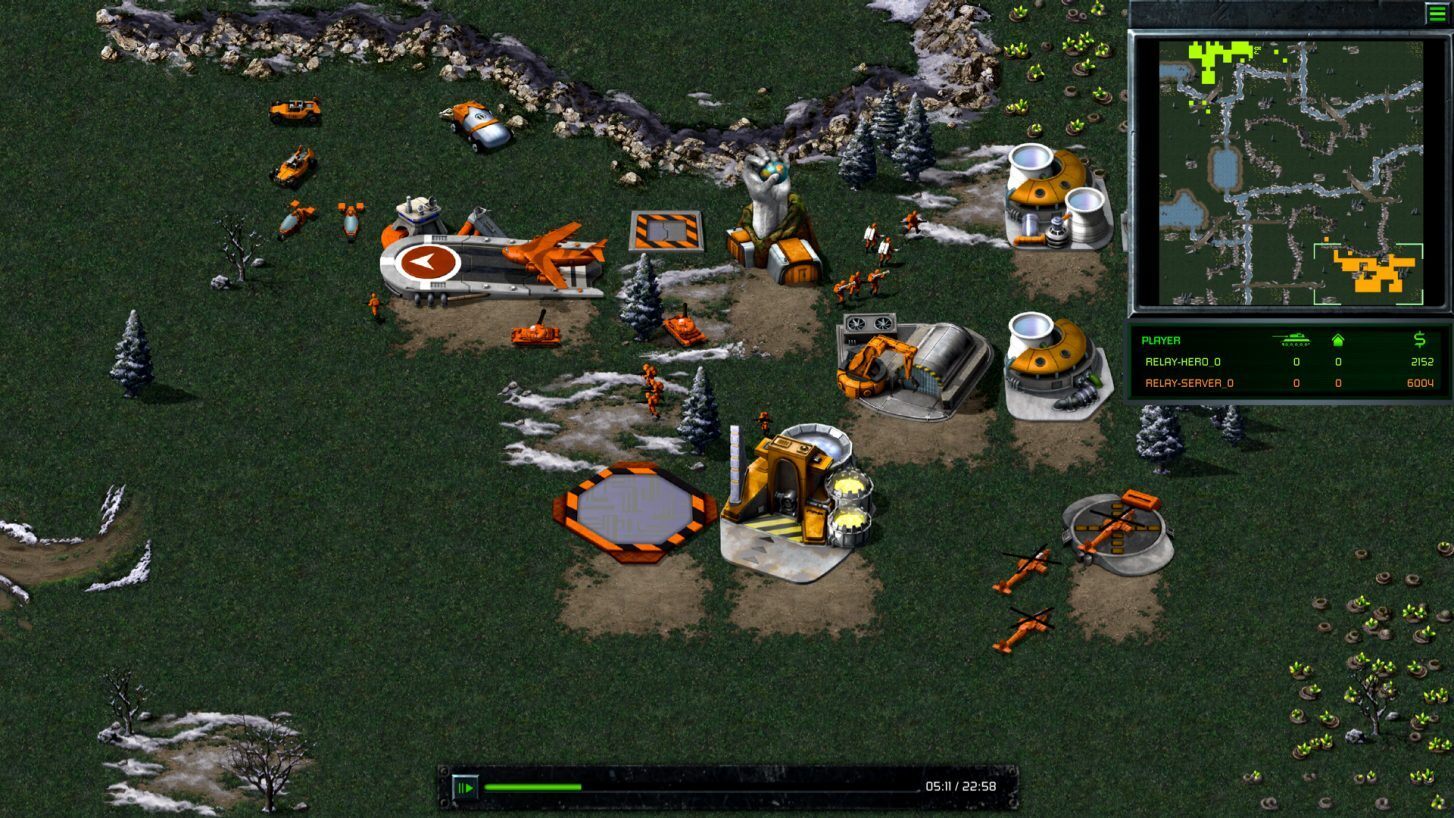 Not much has changed in terms of my gameplay style, that is. In terms of Command and Conquer: Remastered Collection, which incorporates the original game, Command and Conquer: Red Alert and all three expansions that released for the pair, a whole lot has changed. Not just on the visual front, but across the board. It’s just that the visuals are the most apparent.
Not much has changed in terms of my gameplay style, that is. In terms of Command and Conquer: Remastered Collection, which incorporates the original game, Command and Conquer: Red Alert and all three expansions that released for the pair, a whole lot has changed. Not just on the visual front, but across the board. It’s just that the visuals are the most apparent.
The folks at Petroglyph have upscaled everything, while at the same time making it feel like the game never left. If you feel the need, you can render the RTS action up to 4K in resolution — all of the sprites, backgrounds and animations have been upgraded from the ground up. It’s the oddest feeling being presented with a game that looks as good as it did in 1998. But, lest you think not much changed, the game can switch back to its original look or back with a tap on the space bar. Command and Conquer has actually aged well — there’s something charming about the pixelated original. But modern players will find the improved visuals to their liking.
The notorious FMV
 If you’re coming from 1997/98, you’ll remember that these games were known for their full-motion video cutscenes — think early green-screen work with some (occasionally) cringeworthy acting — except Joseph D. Kucan as series villain Kane. He’s pretty badass. Those have been upgraded as well, even though it took some doing. The upscaling work was done using AI and… actually it varies. The human elements tend to look fantastic but the CGI used back in the 20th century hasn’t been updated. There, you’re looking at upscaled (but dated) footage that just… looks like high-res versions of itself. The source video didn’t look all that great. We just thought it did.
If you’re coming from 1997/98, you’ll remember that these games were known for their full-motion video cutscenes — think early green-screen work with some (occasionally) cringeworthy acting — except Joseph D. Kucan as series villain Kane. He’s pretty badass. Those have been upgraded as well, even though it took some doing. The upscaling work was done using AI and… actually it varies. The human elements tend to look fantastic but the CGI used back in the 20th century hasn’t been updated. There, you’re looking at upscaled (but dated) footage that just… looks like high-res versions of itself. The source video didn’t look all that great. We just thought it did.
If there’s a spot in the visual upgrade that doesn’t live up to the rest of the remaster, it’s here. It’s no dealbreaker by any means, it’s just the weakest link. It looks… a little hokey. So if you’re playing with Command and Conquer: Remastered Collection with the kids you probably have by now, you can make fun of the dodgy cutscenes together. At least you don’t have to watch them in 640 x 480.
Sound off, soldier
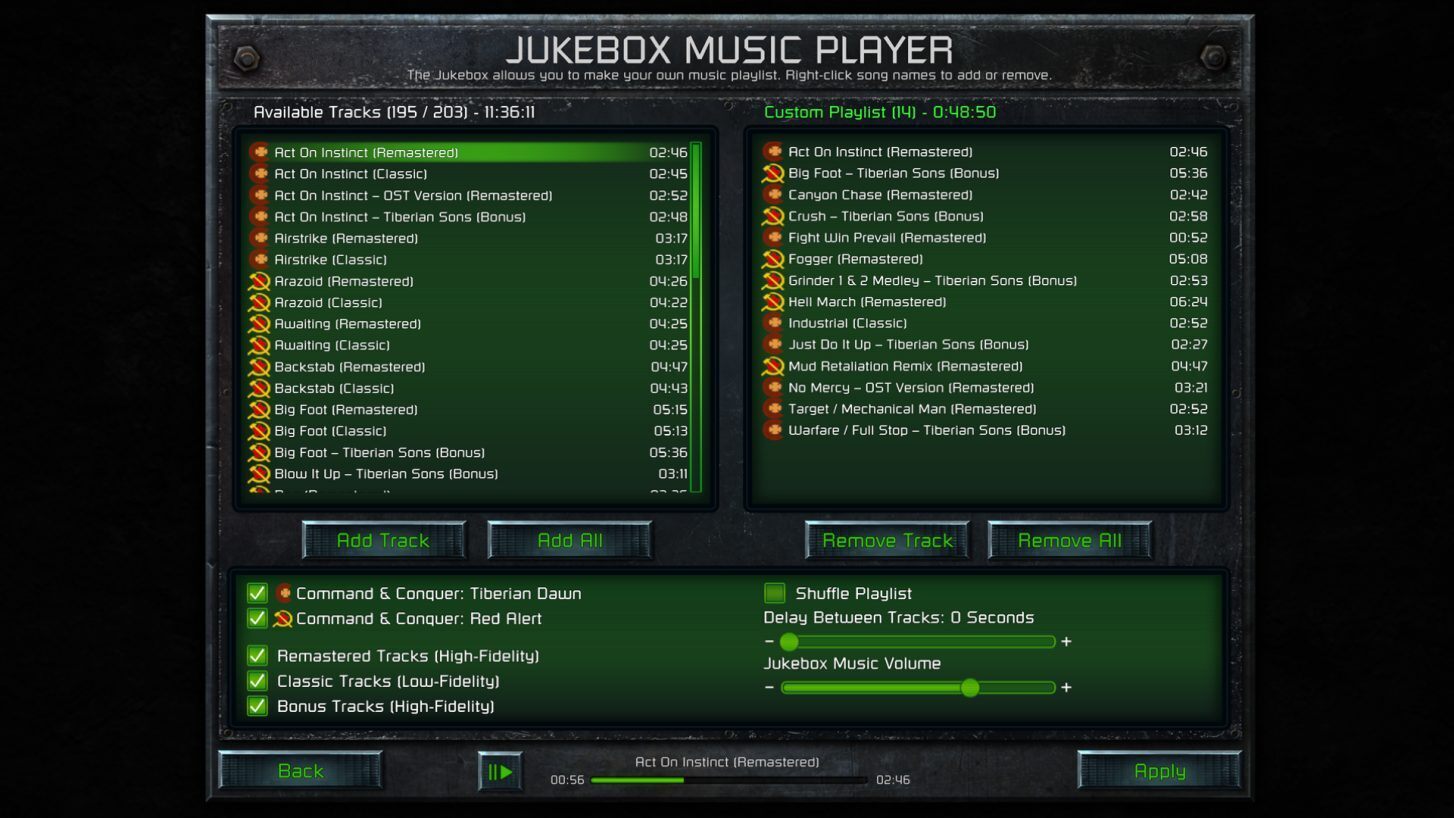 If the video is the weak link, the audio is perhaps the opposite. The original soundtracks for the game are present and accounted for, suitably enhanced in a studio by someone who really knew what they were doing. That someone was Frank Kelpacki, who came back to redo the audio for Command and Conquer. As part of the upgrade is a new Jukebox feature that lets users create their own playlists from the original soundtracks — hearing Hell March blaring through your speakers again must be experienced.
If the video is the weak link, the audio is perhaps the opposite. The original soundtracks for the game are present and accounted for, suitably enhanced in a studio by someone who really knew what they were doing. That someone was Frank Kelpacki, who came back to redo the audio for Command and Conquer. As part of the upgrade is a new Jukebox feature that lets users create their own playlists from the original soundtracks — hearing Hell March blaring through your speakers again must be experienced.
Kelpacki also recorded some all-new music for the game with his band, Frank Kelpacki and the Tiberian Sons. True to the feel of the original soundtrack (indeed, heavily based on it), the new music has a bit of a harder, more modern edge to it. Check it out on Spotify at the very least. Even if you never play the remaster, it’s worth checking out its audio. And we don’t say that about many games.
Life’s good
Which is all well and good but how does the game play? First of all, there’s a lot to experience — you don’t usually get this much game for R350 at launch. But it’s here that very little has changed, at least in a negative way. If anything, the already well-balanced games have been further refined. As long as you’re not a complete twit you’ll find that NOD versus GDI don’t have much between them. It’s always possible to make a dent in your opponent, provided you’re smart about your tactics.
What’s actually different are improvements — features from later games that have been introduced here. Nothing overbearing — build queues have been reorganised, for one. Players don’t have to scroll down to get to certain units (because we invented decent screen resolutions since the late 20th century) but build queues are also grouped by type. This minor modernisation manages to make the games feel fresher without actually changing all that much about how the game works.
The ability to queue units has also been added. We take this for granted now but any time you wanted an infantry soldier, dog, tank or anything else, you had to wait for the last one to finish building and… click again. At least now you can queue up several at once and get on with planning your base.
Command and Conquer: Remastered Collection Verdict
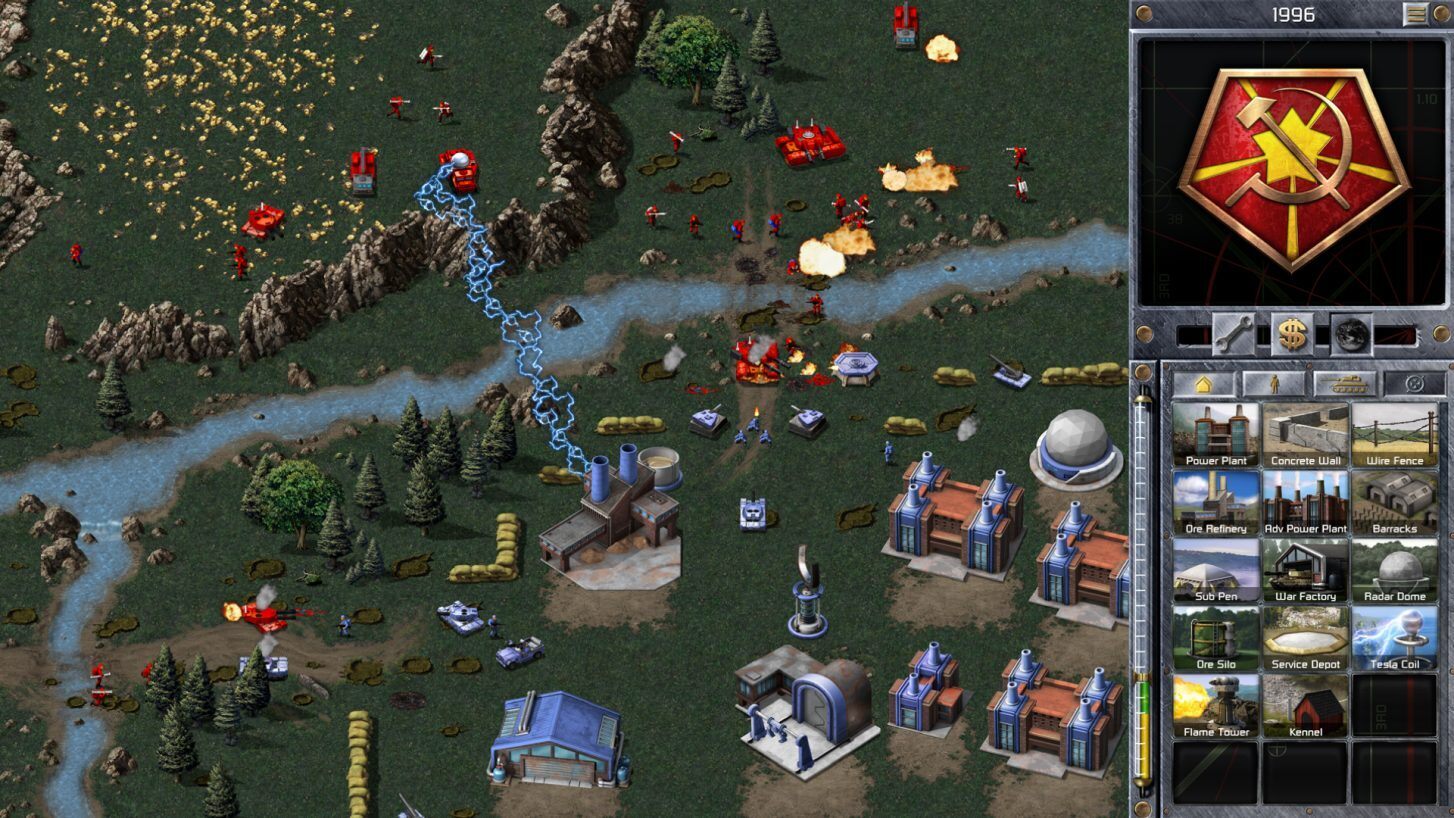 Look, if you loved the Westwood originals, you’ll fall in love all over again with the Command and Conquer: Remastered Collection. There’s a lot to love, the extensive changes have been finely balanced between feeling fresh and changing the way you remember the game and it all looks and sounds fantastic. And if you’re here for the first time, you’ll find out exactly why so many older gamers have such fond memories of the early days of the series.
Look, if you loved the Westwood originals, you’ll fall in love all over again with the Command and Conquer: Remastered Collection. There’s a lot to love, the extensive changes have been finely balanced between feeling fresh and changing the way you remember the game and it all looks and sounds fantastic. And if you’re here for the first time, you’ll find out exactly why so many older gamers have such fond memories of the early days of the series.


